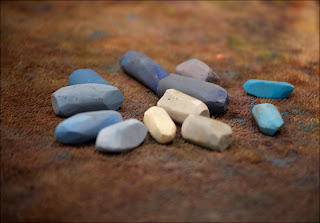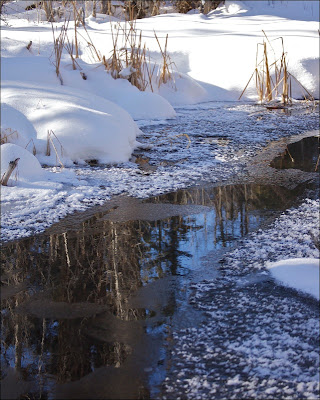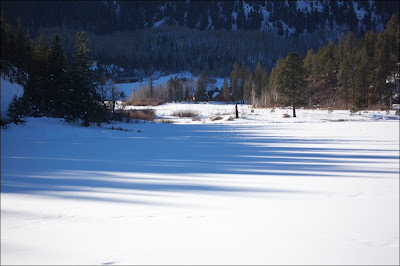Okay, so I'm finally back from my rather longish (for me, anyway) absence from the blogosphere, and really any active participation in the internet in general. Sort of a self-imposed hiatus of sorts, due both from having a series of "meh" paintings as of late, and being too lazy to photograph and post the few that didn't immediately end up in the trash. It used to be that I'd post those less-than-stellar pieces and discuss them, but I guess I'm feeling less inclined to do that these days.
You know the old saying: "If at first you don't succeed, try-try again". That's the theme of today's post, and I thought I'd share the story behind this painting because: 1) there are probably several others that can relate; 2) maybe someone else will be able to apply this to a future situation in their studio instead of throwing in the towel (which I was oh-so-close to doing).
The successful result:
 |
Sandstone Mesa Shadows
14x18 inches
pastel on Somerset Black Velvet paper
© S.Johnson |
Note the surface for this painting - black Somerset paper, which is a printmaking paper, I believe. That's where this all begins. On an art forum I used to read, several pastelists raved about this paper, so a while back, I decided to order a sheet, and last week, I decided it was time to give it a try. It is an odd size - 22x30", and after doing some checking, I found that 14x18" is a sort of standard frame size, and since I wanted to go bigger for this piece, I went with that size.
After having such a great time painting Corona Arch, I decided to stay with the Moab area theme for the next painting, and settled on a photo I took from Potash Road Friday morning, on our way to Corona Arch. This road follows the Colorado on the west side, and this view is from an area called Poison Spider overlook and looks to the east towards Kane Creek Rd:
So, I did a quick 4x6" study to work out the colors and see if it was worth doing a bigger painting:
 |
| Yeah, I think it will work... |
The study was done on the smooth black paper. Somerset paper, however, has a textured surface, much like rough watercolor paper. As I quickly found out, pastel handles completely differently on this surface (duh), and almost right away, the painting started heading south. Colors wouldn't blend and the texture made it impossible to use a light touch that I'm used to.
I decided to turn the first attempt into an alcohol underwash and try again. Here's Round 2, when I determined I hated it and contemplated tossing the thing in the trash:
 |
| Oh, the horrors! |
So, I get out my trusty sanding pad to get rid of some of the texture and pastel:
 |
| Ah...much better |
I'm determined to salvage this paper if at all possible, both because it wasn't cheap and because I'm going to make this work, dammit! After considering possibilities, I decided to pull out an old standby that has worked in the past: Golden Pumice ground. I have transformed
cold-press watercolor paper and
matboard into successful paintings with this product.
The sanding removed a lot of the annoying texture and the pumice ground added the Goldilocks amount of grit to allow for a perfect amount of layering and blending. The ghost image was washed away when I applied the pumice, and resulted in a gray, rather than black, surface.
And, since I don't believe in banging my head against the wall repeatedly, I decided to abandon the original reference and go with a photo taken late in the afternoon along a side trip we took along the Needles Overlook road. On the way back to Hwy 191, the light hitting this Navajo sandstone mesa was amazing, and I knew I had to paint it. The composition was simpler, which also helped. And, glory be - I actually had compatible colors. Success was mine at last!
For giggles and grins, here are the pastels I used that I actually thought to take photos of before they got re-trayed:
 |
| Foreground colors |
 |
| Sandstone mesa |
 |
| Sky and clouds |
I guess the take-home message from this is that, if you are one who experiments with new surfaces and you find they aren't working with your techniques or painting style, don't be so quick to toss it, and consider modifications that might make it useable.























































